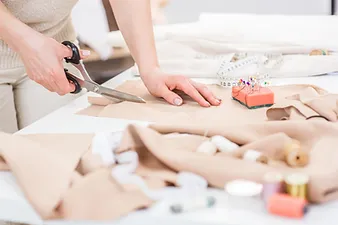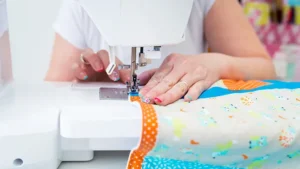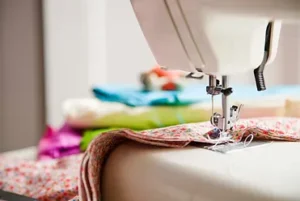Sewing with knit fabrics can be both enjoyable and challenging, but with the right techniques
and tips, you can create comfortable and stylish garments. Knit fabrics, which include materials like jersey, cotton interlock, and stretchy blends, are known for their stretchiness and softness. Here are some valuable tips for sewing with knit fabrics:
1. Use the Right Needle:
- Choose a ballpoint or stretch needle specifically designed for knits. These needles have rounded tips that slide between the fibers of the fabric, preventing snags and runs.
2. Select the Appropriate Thread:
- Use all-purpose polyester thread, as it has some stretch and will work well with knit fabrics. Stretch thread, like woolly nylon, can also be useful for overlocking or using in the bobbin.
3. Stabilize Edges:
- Knit fabrics tend to curl at the edges. To prevent this, use stabilizers like wash-away or tear-away stabilizing tape along hems and seam allowances.
4. Pre-wash and Pre-shrink:
- Always pre-wash and pre-shrink your knit fabric as it may shrink after the first wash. This will prevent your finished garment from warping or becoming misshapen.
5. Cut with Care:
- Use sharp fabric scissors or a rotary cutter to cut knit fabric. To prevent stretching, lay the fabric flat on a cutting mat and use pattern weights to secure it before cutting.
6. Match the Right Stitch:
- Use a zigzag stitch, a stretch stitch, or a serger/overlock machine for seams. These stitches allow for stretch without breaking. Test your stitches on a scrap of fabric to find the best settings.
7. Use the Differential Feed on a Serger:
- If you have a serger or overlock machine, adjust the differential feed to prevent stretching or puckering. Experiment with the settings until you achieve the desired result.
8. Pin or Use Clips Sparingly:
- Knit fabrics can be sensitive to pinholes. Instead of using many pins, consider using clips or basting with a long stitch to hold seams in place.
9. Pay Attention to Seam Allowances:
- Use a 1/4-inch or 3/8-inch seam allowance for knit fabrics, as they don’t fray like woven fabrics. Be consistent with your seam allowances to ensure a neat finish.
10. Stretch as You Sew:
- When sewing curved or shaped seams, gently stretch the fabric as you sew to accommodate the curves without puckering or distortion.
11. Use Clear Elastic or Stabilizer for Shoulders:
- To prevent shoulder seams from stretching out, consider stabilizing them with clear elastic or stay tape.
12. Hem with a Twin Needle:
- Achieve professional-looking hems by using a twin needle for a stretchy, decorative finish.
13. Practice Patience:
- Sewing with knits may require more patience and experimentation than sewing with woven fabrics. Don’t be discouraged if your first attempts don’t yield perfect results.
14. Test on Scraps:
- Keep scraps of your fabric on hand to test stitches, settings, and techniques before applying them to your project.
15. Practice, Practice, Practice:
- Like any sewing skill, sewing with knits improves with practice. Start with simple projects and gradually tackle more complex ones as you gain confidence.
Remember that sewing with knits can be enjoyable and rewarding once you become familiar with the techniques. Embrace the stretch and softness of knit fabrics to create comfortable and stylish garments for your wardrobe.




